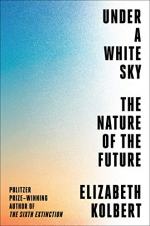
|
| Name: _________________________ | Period: ___________________ |
This test consists of 15 multiple choice questions and 5 short answer questions.
Multiple Choice Questions
1. What is a suppression drive?
(a) A gene drive that would overpower natural selection.
(b) A gene drive that suppresses one’s immune system.
(c) A gene drive that kills off a species.
(d) A gene drive that makes all recessive genes dominant.
2. Where is the geothermal plant located that Kolbert visits in Up in the Air: Chapter 1?
(a) Poland.
(b) Switzerland.
(c) China.
(d) Iceland.
3. Lackner realized back in the 1970s what is now well-known that the world is decades away from having what kind of working reactor?
(a) Emissions.
(b) Carbon.
(c) Fusion.
(d) Hydrogen.
4. Kolbert talks about a trip she took to Zurich, Switzerland, where she visited a Climeworks facility; what was done with the carbon dioxide?
(a) It was used to feed a greenhouse full of vegetables.
(b) It was used to make stone fr building.
(c) It was used to burn trash.
(d) It was used to fuel cars.
5. When do some people believe that humans began altering the atmosphere, called the early Anthropocene hypothesis?
(a) 8 or 9 years ago.
(b) 80 or 90 years ago.
(c) 800 or 900 years ago.
(d) 8,000 or 9,000 years ago.
6. What idea did Lackner and his friend Wendt come up with?
(a) Ten billion years.
(b) Humans are not very intelligent.
(c) Ireland.
(d) Auxons.
7. How many species of birds has the Pacific rat killed off?
(a) None.
(b) At least 100 species.
(c) At least 10,000 species.
(d) At least 1,000 species.
8. How does Tizard hope to teach other animals to avoid the cane toads?
(a) Use small, foul-tasting toads to teach other species that these toads do not taste good.
(b) Use the non-lethal toads to teach other animals that cane toads make you sick, so you should not eat them.
(c) Use glowing toads to scare away other species.
(d) To show other species how scared and hard to find these toads are.
9. According to Kolbert, who knows for certain how much hotter the world will get before out-and-out disaster becomes inevitable?
(a) No one.
(b) Several top scientists.
(c) God.
(d) Those countries involved in the Paris accord.
10. What did Lin Schwarzkopf help to invent?
(a) Brodifacoum.
(b) CATCHA.
(c) The Toadinator trap.
(d) CRISPR.
11. In Into the Wild: Chapter 3, why does Kolbert begin with an explanation of the Norse god, Odin?
(a) To show the similarities between gods and humans.
(b) To compare him to the powers of nature.
(c) To compare him to the genetic-engineering company, Odin.
(d) To show how dangerous it is to play God.
12. In Up in the Air: Chapter 1, Kolbert decides to support what type of service?
(a) One that runs greenhouses on carbon dioxide emissions.
(b) One that scrubs carbon emissions from the air.
(c) One that sends SAILs into the stratosphere.
(d) One that sends diamonds into the stratosphere.
13. Who is Edda Aradóttir?
(a) One of the thermal engineers in Poland.
(b) A friend of Kolbert’s.
(c) A solar geoengineer hired by Bill Gates.
(d) The managing director of the geothermal plant.
14. Why were cane toads first introduced outside of their natural environments?
(a) To kill the beetle grubs that were eating sugar cane.
(b) To keep ponds clear of algae.
(c) To replace another extinct toad species.
(d) To eat fly larvae.
15. According to Kolbert, why are mice perfect lab animals?
(a) They are cheap and easy to care for.
(b) Their genetics are well known and studied.
(c) They are clean and obedient.
(d) They are small and gentle.
Short Answer Questions
1. What combination does Kolbert mention that could make cane toads non-lethal and coral heat-resistant?
2. How are rodents often currently killed?
3. For how long might you be blind if cane toad poison gets in your eyes?
4. Fifteen million tons of carbon dioxide were released by humans in 1776, while today that number is closer to what?
5. Lackner and a friend, Christopher Wendt, met over beers and starting wondering what?
|
This section contains 683 words (approx. 3 pages at 300 words per page) |

|




